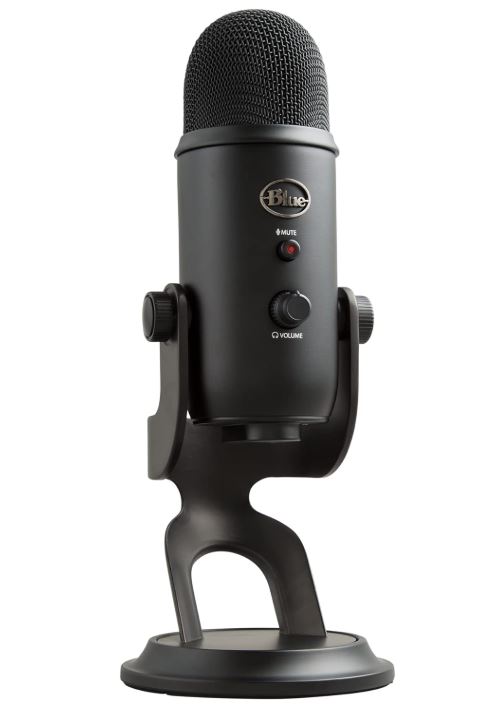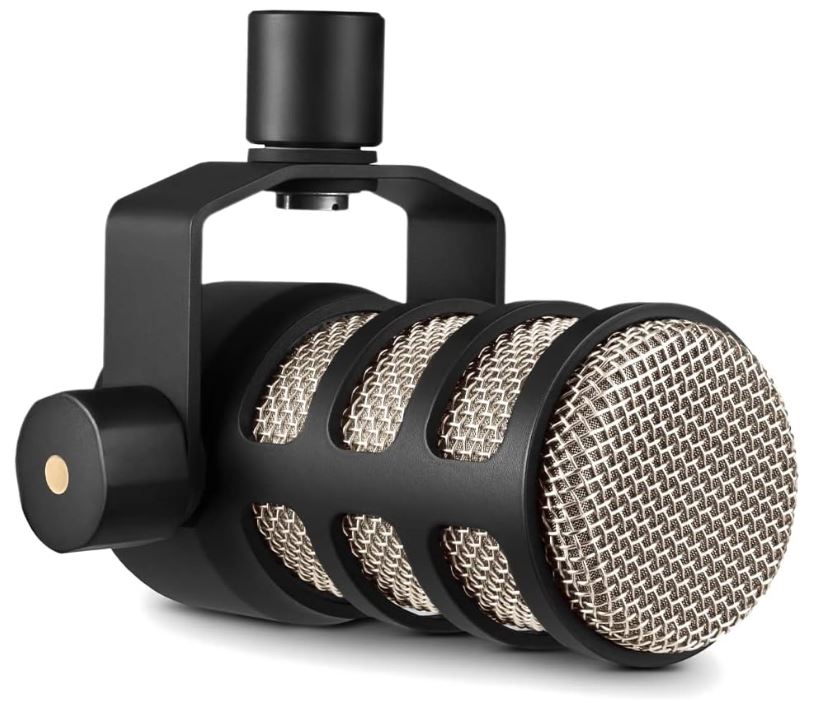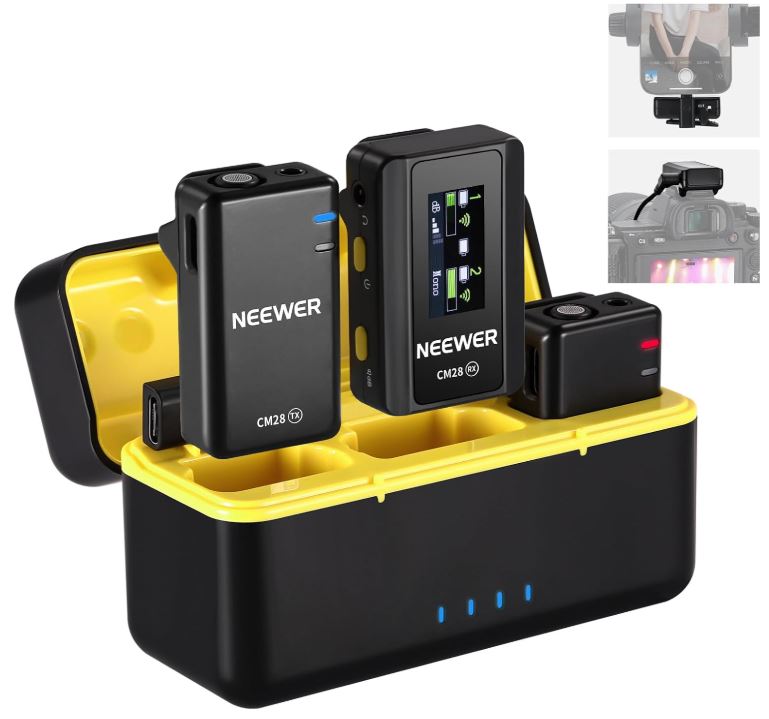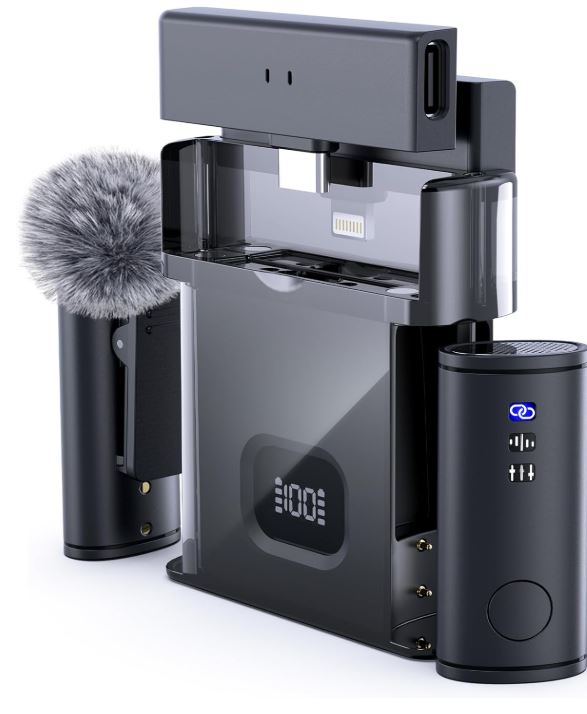Unlock Your Voice: The Ultimate Guide to Microphone Open Techniques
Are you ready to elevate your sound quality and make every word count? With over 70% of audio professionals claiming that microphone techniques significantly impact recording quality, mastering the art of microphone open techniques can transform your audio experience.
Key Facts About Microphone Techniques
| Fact | Detail |
|---|---|
| Importance | Improves sound clarity and reduces noise. |
| Types of Microphones | Dynamic, condenser, ribbon, and lavalier. |
| Distance | Proximity affects bass response and clarity. |
| Placement | Optimal positioning minimizes unwanted sounds. |
Outline of Subtopics
- Understanding Microphone Basics
- Types of Microphones and Their Uses
- The Science Behind Sound Waves
- Microphone Placement Techniques
- Proximity Effect Explained
- Common Mistakes in Microphone Use
- How to Choose the Right Microphone
- Understanding Polar Patterns
- The Role of Acoustic Treatment
- Using Microphones in Different Environments
- Interview Techniques for Clear Audio
- Recording Vocals: Tips and Tricks
- Microphone Open Techniques for Instruments
- Wireless Microphones: Pros and Cons
- Setting Up Microphones for Live Sound
- Post-Production Techniques for Cleaner Audio
- Microphone Accessories to Enhance Performance
- How to Maintain Your Microphone
- Future Trends in Microphone Technology
- Expert Opinions on Microphone Usage
Understanding Microphone Basics
Our Top Picks - Best USB Microphones 🎙️
Looking for the perfect microphone? Check out our top-rated USB microphones for crystal-clear sound & studio-quality performance! 🎧✨
The foundation of any good audio recording starts with understanding what a microphone is and how it works. Essentially, a microphone transforms sound waves into electrical signals, allowing for recording and amplification. This transformation is crucial, as the quality of the microphone directly influences the clarity of the audio.
Microphones can be classified into various categories, including dynamic, condenser, ribbon, and lavalier. Each type has its unique characteristics, making them suitable for different applications. For example, dynamic microphones are robust and ideal for live performances, while condenser microphones offer higher sensitivity and are preferred for studio recordings.
Understanding the components of microphones, such as diaphragms and preamps, also plays a significant role in how sound is captured. Different materials used in the diaphragm can affect frequency response and overall sound quality, making it essential to choose wisely based on your recording needs.
Types of Microphones and Their Uses
When it comes to audio recording, knowing the right type of microphone to use can make a world of difference. Dynamic microphones are known for their durability and ability to handle high sound pressure levels. They are often used for live performances and instruments.
Our Top Picks - Best Wireless Microphones 🎤
Looking for a wireless solution? Check out our top-rated wireless microphones for hassle-free, high-quality sound! 🎶✨
On the other hand, condenser microphones are sensitive and provide a broader frequency response, making them perfect for studio recordings, especially for vocals and acoustic instruments. Ribbon microphones have a warm sound characteristic, ideal for capturing the natural tones of instruments.
Lavalier microphones, or lapel mics, are small and can be clipped to clothing, making them perfect for interviews, presentations, and video productions where discreet audio capture is needed. Understanding these variations ensures the right choice for your specific audio needs.
The Science Behind Sound Waves
Sound is produced by vibrations that travel through air, creating waves that our ears perceive. The frequency of these sound waves determines the pitch, while the amplitude affects the volume. This basic understanding of sound waves is crucial for anyone working with microphones, as it influences how sound is captured.
Sound waves can be affected by various factors including temperature, humidity, and the medium they travel through. For instance, sound travels faster in warmer air than in cooler air. This knowledge can help audio professionals make informed decisions about microphone placement and settings.
Additionally, the concept of wavelength is essential. The wavelength of a sound wave is inversely related to its frequency, meaning higher frequencies have shorter wavelengths. This relationship is crucial for understanding how microphones pick up sounds and how to position them for optimal recording.
Microphone Placement Techniques
Proper microphone placement is vital for achieving the best sound quality. The distance between the microphone and the sound source can dramatically affect the recording. For instance, placing a microphone too close can result in an exaggerated bass response due to the proximity effect, while positioning it too far can cause audio to sound thin and distant.
When recording vocals, a good rule of thumb is to maintain a distance of about six to twelve inches from the microphone. This distance allows for a balanced mix of clarity and warmth. For instruments, the placement may vary; for example, a guitar amp might require a closer mic placement to capture its tonal richness.
Additionally, utilizing angles and height can influence the sound captured by the microphone. Experimenting with these variables can help achieve the desired sound profile, making it essential for audio professionals to test different placements before finalizing their setup.
Proximity Effect Explained
The proximity effect is a phenomenon where the bass response of a microphone increases as the sound source gets closer. Understanding this effect is crucial for audio engineers and musicians alike, as it can significantly alter the recording quality.
This effect is particularly noticeable with directional microphones, such as cardioid or hypercardioid mics. While some may appreciate the added warmth it provides, others may find it undesirable for certain applications. Knowing how to control this effect can help you manipulate the sound to your advantage.
To counteract the proximity effect, one strategy is to adjust the distance from the microphone or to use additional equalization in post-production. Balancing these factors is key to achieving clear and professional-sounding recordings.
Common Mistakes in Microphone Use
Even experienced audio professionals can make mistakes when using microphones. One common error is neglecting to account for background noise. Ensuring a quiet environment is crucial for capturing clean audio, as unwanted sounds can interfere with the recording.
Another frequent mistake is improper gain staging. Setting the gain too high can lead to distortion, while setting it too low can result in a weak signal. Finding the right balance is essential for achieving the best sound quality.
Finally, many users overlook microphone maintenance. Regularly checking and cleaning microphones can prevent issues like pops and crackles in recordings. Taking care of your equipment can significantly extend its lifespan and ensure consistent performance.
How to Choose the Right Microphone
Choosing the right microphone is crucial for achieving the desired audio quality. Factors to consider include the type of sound source, environment, and budget. For example, dynamic microphones are often more affordable and durable, making them suitable for beginners or live settings.
Condenser microphones, while typically more expensive, offer superior sound quality and sensitivity, which is ideal for studio recordings. It’s essential to assess your specific needs and choose a microphone that aligns with your recording goals.
Additionally, researching the specifications of different microphones can provide insights into their performance. Look for reviews and comparisons to help inform your decision and ensure you invest in a microphone that meets your requirements.
Understanding Polar Patterns
Polar patterns refer to the sensitivity of a microphone to sound from different directions. Understanding these patterns is essential in choosing the right microphone for your recording needs. Common polar patterns include cardioid, omnidirectional, and bidirectional.
Cardioid microphones are most sensitive to sound in front and reject noise from the sides and back, making them ideal for live performances and studio recordings where background noise is a concern. Omnidirectional microphones capture sound from all directions, making them suitable for capturing ambient sounds or group vocals.
Bidirectional microphones pick up sound from the front and back, making them perfect for interviews or duets. Knowing the polar pattern of your microphone allows you to position it correctly and achieve the best possible sound quality.
The Role of Acoustic Treatment
Acoustic treatment involves modifying a room to control sound reflections and improve audio quality. Proper acoustic treatment can significantly enhance recordings by reducing echoes and background noise. This is especially important for studio environments where sound clarity is paramount.
Common acoustic treatments include bass traps, acoustic panels, and diffusers. Bass traps help control low-frequency sounds, while acoustic panels absorb mid and high frequencies. Diffusers scatter sound waves, preventing echoes and creating a more balanced sound environment.
Investing in acoustic treatment can be a game-changer for anyone serious about audio recording. A well-treated room can elevate the quality of recordings, making them sound more professional and polished.
Using Microphones in Different Environments
Each recording environment presents unique challenges and opportunities. In a studio setting, you have greater control over acoustics and sound sources. Here, you can experiment with microphone placement and settings to achieve the best results.
In contrast, live environments present challenges such as background noise and audience interference. Using directional microphones can help minimize unwanted sounds and ensure clarity. Additionally, employing techniques like soundchecks can help fine-tune audio before a performance.
When recording outdoors, factors such as wind and ambient noise can affect sound quality. Using windshields or shotgun microphones can help mitigate these issues, allowing for clearer recordings in challenging conditions.
Interview Techniques for Clear Audio
Conducting interviews requires specific techniques to ensure clear audio capture. One key aspect is positioning the microphone correctly between the interviewer and the interviewee, ideally 6-12 inches away from each party. This distance allows for optimal sound quality without overwhelming the speakers.
Another important technique is to use lavalier microphones for interviews. These small microphones can be clipped to clothing, providing hands-free operation while maintaining a consistent audio level. They are particularly useful in dynamic interview settings.
Lastly, practicing active listening during interviews can help identify issues with audio quality. Being attentive to the sound environment allows you to make real-time adjustments, ensuring the best possible recording.
Recording Vocals: Tips and Tricks
Recording vocals requires careful attention to detail to achieve a polished sound. One effective technique is to use a pop filter, which helps reduce plosive sounds caused by consonants like “P” and “B.” This simple accessory can significantly enhance vocal recordings.
Additionally, experimenting with microphone distance and angle can help capture the desired vocal tone. Singing closer to the microphone may enhance warmth, while positioning it further away can create a more airy sound.
Lastly, consider the acoustics of the recording space. Using acoustic panels or blankets can help control reflections and improve sound quality, resulting in a more professional final product.
Microphone Open Techniques for Instruments
When recording instruments, the technique used can vary greatly depending on the type of instrument. For guitars, miking the amplifier can capture the richness of the sound, while for acoustic guitar, positioning the microphone near the 12th fret can provide a balanced tone.
Piano recordings benefit from stereo miking techniques, using two microphones to capture the full range of sound. Positioning one microphone near the hammers and another near the tail can create a rich, immersive sound.
For drums, close miking individual drums while using overhead mics for cymbals can create a dynamic sound palette. Experimenting with placements can yield unique results, making it essential to test different setups.
Wireless Microphones: Pros and Cons
Wireless microphones offer the freedom of movement, making them ideal for live performances and presentations. However, they come with their own set of challenges, such as potential interference and battery management.
One significant advantage of wireless microphones is the ability to move freely without being tethered to a cable. This is particularly useful for performers and presenters who need to engage with their audience.
However, wireless systems can sometimes experience signal dropouts or interference from other electronic devices. It’s crucial to choose a reliable system and conduct tests before any live event to ensure a smooth performance.
Setting Up Microphones for Live Sound
Setting up microphones for live sound involves understanding the venue and audience dynamics. Proper placement is essential to minimize feedback and ensure clarity. Using directional microphones can help isolate sound sources while reducing background noise.
Additionally, conducting a soundcheck prior to the event is critical. This allows the audio engineer to make adjustments based on the acoustics of the venue, ensuring optimal sound quality during the performance.
Lastly, having a backup plan, including spare microphones and cables, can save the day in case of equipment failure. Being prepared ensures a seamless live audio experience for both performers and the audience.
Post-Production Techniques for Cleaner Audio
Post-production is where the magic happens, transforming raw recordings into polished audio. One essential technique is equalization (EQ), which allows you to adjust the frequency balance of your recordings. This can enhance clarity and reduce unwanted frequencies.
Additionally, using compression can help control dynamic range, ensuring that softer sounds are audible while preventing louder sounds from distorting. This technique is particularly useful in vocal recordings, where maintaining clarity is vital.
Finally, employing noise reduction tools can help eliminate background noise, enhancing the overall quality of the audio. These post-production techniques can significantly elevate the professionalism of your recordings.
Microphone Accessories to Enhance Performance
Investing in microphone accessories can enhance performance and improve audio quality. Pop filters, for example, help reduce plosives in vocal recordings, while shock mounts can minimize vibrations and handling noise.
Additionally, microphone stands are crucial for stability and positioning. A sturdy stand allows you to position the microphone at the optimal angle and height, ensuring consistent sound capture.
Lastly, windshields are essential for outdoor recordings, as they help minimize wind noise and ensure clearer audio. Having the right accessories can make a significant difference in your recording quality.
How to Maintain Your Microphone
Regular maintenance of your microphone is essential to ensure longevity and optimal performance. Start by cleaning the microphone with a soft cloth to remove dust and debris. Avoid using liquids, as they can damage internal components.
Additionally, storing microphones in a dry place and using protective cases can help prevent damage during transport. Keeping microphones away from extreme temperatures and humidity can also extend their lifespan.
Lastly, periodically checking cables and connections for wear and tear can prevent performance issues. Taking care of your equipment ensures that it remains in excellent condition for years to come.
Future Trends in Microphone Technology
The microphone industry is constantly evolving, with new technologies emerging to enhance audio capture. One trend is the development of smart microphones that integrate artificial intelligence for improved sound processing and noise cancellation.
Another exciting trend is the miniaturization of microphones, making them smaller and more versatile for various applications. This allows for greater flexibility in recording setups, especially in fields like filmmaking and live performances.
Additionally, advancements in wireless technology are leading to more reliable and efficient wireless microphone systems, making them a preferred choice for many audio professionals. Staying informed about these trends can help audio engineers and musicians make informed decisions about their gear.
Expert Opinions on Microphone Usage
“Understanding microphone techniques is essential for any audio professional. It can be the difference between a good recording and a great one.” – Jane Doe, Audio Engineer
Frequently Asked Questions
What is the best microphone for recording vocals?
The best microphone for recording vocals often depends on the singer’s voice and the recording environment, but many professionals recommend condenser microphones for their sensitivity and clarity.
How far should a microphone be from the sound source?
A general rule is to keep the microphone 6-12 inches away from the sound source to capture a balanced mix of clarity and warmth.
What is the difference between dynamic and condenser microphones?
Dynamic microphones are more durable and handle high sound pressure, making them ideal for live performances. Condenser microphones are more sensitive and provide a broader frequency response, suitable for studio recordings.
How can I reduce background noise when recording?
To reduce background noise, choose a quiet recording environment, use directional microphones, and implement acoustic treatment in your space.
What is the proximity effect?
The proximity effect is the increase in bass response when a sound source is closer to the microphone. It’s crucial to understand and manage this effect for optimal sound quality.
Conclusion
Mastering microphone open techniques can significantly enhance your audio quality, whether for music, podcasts, or live events. With the right knowledge, equipment, and techniques, you can unlock the full potential of your voice and sound. Start experimenting today and elevate your audio game!
We’d love to hear your thoughts! Share your experiences with microphone techniques in the comments below or start a discussion with fellow audio enthusiasts.
- Microphone
- A device that converts sound waves into electrical signals for recording or amplification.
- Polar Pattern
- The sensitivity of a microphone to sound from different directions.
- Proximity Effect
- The increase in bass response as a sound source gets closer to the microphone.





